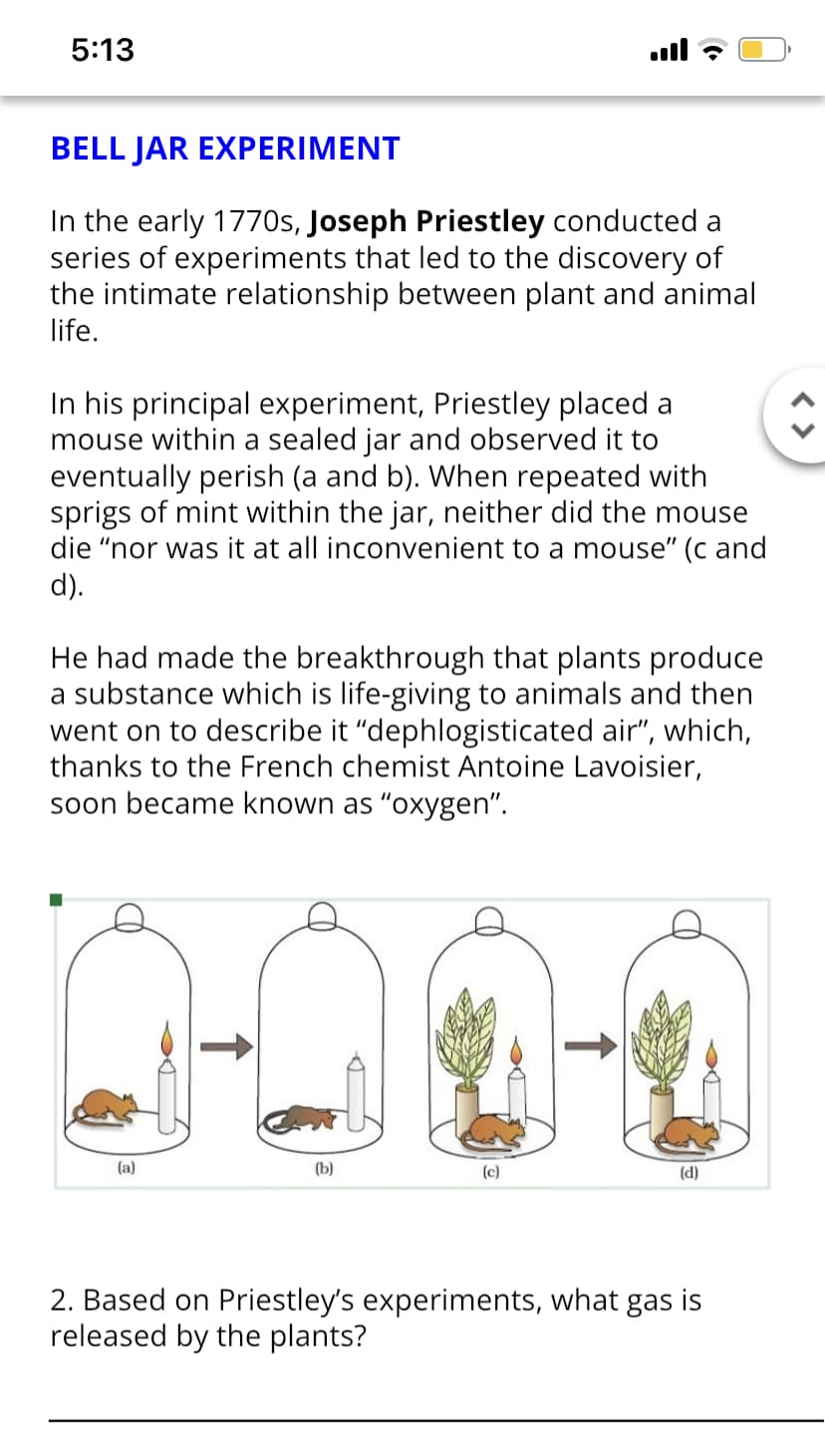BELL JAR EXPERIMENT In the early 1770s, Joseph Priestley conducted a series of experiments that led to the discovery of the intimate relationship between plant and animal life. In his principal experiment, Priestley placed a mouse within a sealed jar and observed it to eventually perish (a and b). When repeated with sprigs of mint within the jar, neither did the mouse die “nor was it at all inconvenient to a mouse” (c and d). He had made the breakthrough that plants produce a substance which is life-giving to animals and then went on to describe it “dephlogisticated air”, which, thanks to the French chemist Antoine Lavoisier, soon became known as “oxygen”.
BELL JAR EXPERIMENT
In the early 1770s, Joseph Priestley conducted a series of experiments that led to the discovery of the intimate relationship between plant and animal life.
In his principal experiment, Priestley placed a mouse within a sealed jar and observed it to eventually perish (a and b). When repeated with sprigs of mint within the jar, neither did the mouse die “nor was it at all inconvenient to a mouse” (c and d).
He had made the breakthrough that plants produce a substance which is life-giving to animals and then went on to describe it “dephlogisticated air”, which, thanks to the French chemist Antoine Lavoisier, soon became known as “oxygen”.

Trending now
This is a popular solution!
Step by step
Solved in 2 steps

- Priestley's experiments provide solid evidence that shows that plants give off oxygen. Combining with the evidence you have received from lesson 1, please fill in the blanks.
Plants take in........from the atmosphere and release ........into the atmosphere.







